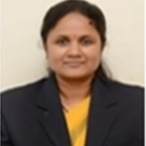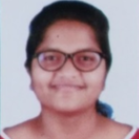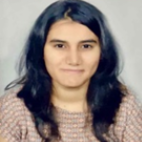International Journal of Image, Graphics and Signal Processing (IJIGSP)
IJIGSP Vol. 17, No. 1, 8 Feb. 2025
Cover page and Table of Contents: PDF (size: 848KB)
A Comprehensive Evaluation of Spectral Unmixing Methods in Hyperspectral Imaging
PDF (848KB), PP.59-69
Views: 0 Downloads: 0
Author(s)
Index Terms
Hyperspectral Images (HSI), Hyperspectral Unmixing (HU), Mean Reconstruction Error (MRE), Endmember Determination (ED)
Abstract
This study explores hyperspectral image classification, particularly focusing on spectral unmixing techniques applied to the widely used "PaviaU" dataset. Nine distinct endmembers, representing materials such as Water, Trees, and Shadows, serve as the foundation for our investigation. Introducing a novel linear regression model meticulously tailored for hyperspectral image reconstruction, we aim to address the complexities inherent in such datasets. Our approach leverages a fusion of non-negative least squares (NNLS) and a sum-to-one constraint, employing the Sequential Least Squares Quadratic Programming (SLSQP) method to seek optimal coefficients. Through rigorous experimentation and analysis, our model achieves a mean reconstruction error of 1152.318. The efficacy of our approach lies in its seamless integration of NNLS and SLSQP, customizing a solution to the intricate nuances of hyperspectral data. By significantly reducing reconstruction errors, our method represents a substantial advancement in spectral unmixing techniques. Furthermore, this study produces nine abundance maps for each endmember using least squares with constraints, lasso, and averaging the squared differences between observed and reconstructed spectra for pixels with nonzero class labels to determine reconstruction error. Emphasizing the importance of abundance maps and reconstruction errors, we compare the results obtained through our proposed spectral unmixing methods with those of alternative approaches. This comprehensive analysis not only sheds light on the performance superiority of our proposed methods but also provides valuable insights for practitioners and researchers working with hyperspectral imaging data. By offering enhanced accuracy and efficiency in spectral unmixing, our approach holds significant promise for applications ranging from environmental monitoring to precision agriculture and beyond.
Cite This Paper
Archana Chaudhari, Samrudhi S. Wath, Tushar P. Zanke, Stuti N. Jagtap, Snehashish S. Mulgir, "A Comprehensive Evaluation of Spectral Unmixing Methods in Hyperspectral Imaging", International Journal of Image, Graphics and Signal Processing(IJIGSP), Vol.17, No.1, pp. 59-69, 2025. DOI:10.5815/ijigsp.2025.01.05
Reference
[1]J. V. Rissati, P. C. Molina, and C. S. Anjos, “Hyperspectral Image Classification Using Random Forest and Deep Learning Algorithms,” in 2020 IEEE Latin American GRSS & ISPRS Remote Sensing Conference (LAGIRS), IEEE, Mar. 2020, pp. 132–132. doi: 10.1109/LAGIRS48042.2020.9165588.
[2]A. Lowe, N. Harrison, and A. P. French, “Hyperspectral image analysis techniques for the detection and classification of the early onset of plant disease and stress,” Plant Methods, vol. 13, no. 1, p. 80, Dec. 2017, doi: 10.1186/s13007-017-0233-z.
[3]L. Agilandeeswari, M. Prabukumar, V. Radhesyam, K. L. N. B. Phaneendra, and A. Farhan, “Crop Classification for Agricultural Applications in Hyperspectral Remote Sensing Images,” Applied Sciences, vol. 12, no. 3, p. 1670, Feb. 2022, doi: 10.3390/app12031670.
[4]M. Sharma, P. Bangotra, A. S. Gautam, and S. Gautam, “Sensitivity of normalized difference vegetation index (NDVI) to land surface temperature, soil moisture and precipitation over district Gautam Buddh Nagar, UP, India,” Stochastic Environmental Research and Risk Assessment, vol. 36, no. 6, pp. 1779–1789, Jun. 2022, doi: 10.1007/s00477-021-02066-1.
[5]H. Chen, F. Miao, Y. Chen, Y. Xiong, and T. Chen, “A Hyperspectral Image Classification Method Using Multifeature Vectors and Optimized KELM,” IEEE J Sel Top Appl Earth Obs Remote Sens, vol. 14, pp. 2781–2795, 2021, doi: 10.1109/JSTARS.2021.3059451.
[6]W. Li, G. Wu, F. Zhang, and Q. Du, “Hyperspectral Image Classification Using Deep Pixel-Pair Features,” IEEE Transactions on Geoscience and Remote Sensing, vol. 55, no. 2, pp. 844–853, Feb. 2017, doi: 10.1109/TGRS.2016.2616355.
[7]Y. Cheng, L. Zhao, S. Chen, and X. Li, “Hyperspectral Unmixing Network Accounting for Spectral Variability Based on a Modified Scaled and a Perturbed Linear Mixing Model,” Remote Sens (Basel), vol. 15, no. 15, p. 3890, Aug. 2023, doi: 10.3390/rs15153890.
[8]S. S. Sawant and P. Manoharan, “Unsupervised band selection based on weighted information entropy and 3D discrete cosine transform for hyperspectral image classification,” Int J Remote Sens, vol. 41, no. 10, pp. 3948–3969, May 2020, doi: 10.1080/01431161.2019.1711242.
[9]S. Dasi, D. Peeka, R. B. Mohammed, and B. L. N. Phaneendra Kumar, “Hyperspectral Image Classification using Machine Learning Approaches,” in 2020 4th International Conference on Intelligent Computing and Control Systems (ICICCS), IEEE, May 2020, pp. 444–448. doi: 10.1109/ICICCS48265.2020.9120945.
[10]L. N. P. Boggavarapu and P. Manoharan, “Classification of Hyper Spectral Remote Sensing Imagery Using Intrinsic Parameter Estimation,” 2020, pp. 852–862. doi: 10.1007/978-3-030-16660-1_83.




